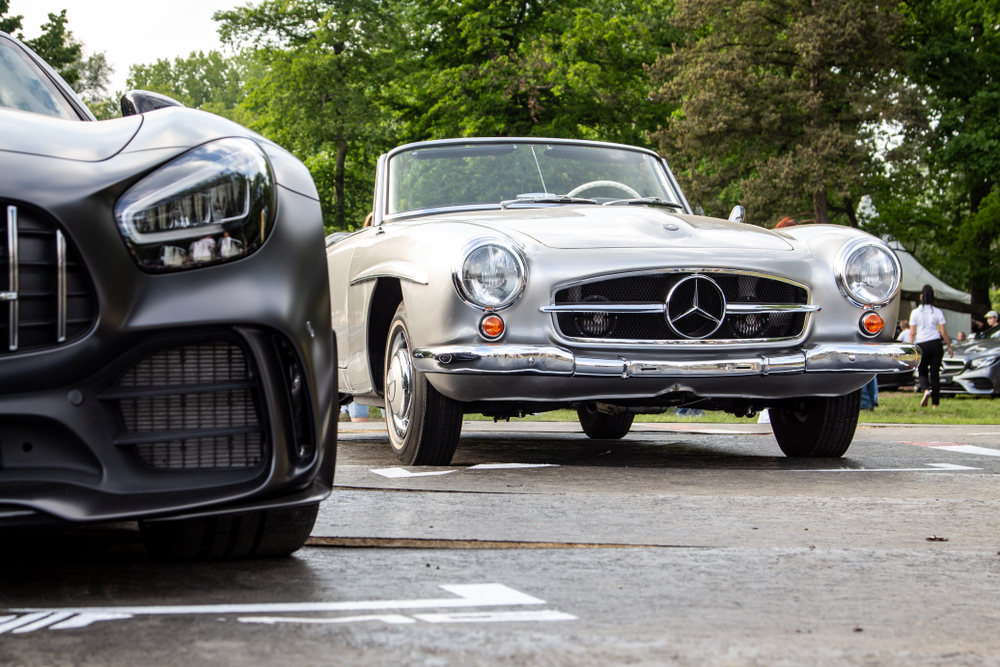Travelling through the history of automotive design is like opening a time capsule that contains the development of human creativity and enthusiasm. The fascinating history of automotive design enthrals enthusiasts all over the world, from the modest beginnings of the horseless carriage to the state-of-the-art designs of today. Every period opens up a new chapter in the story of invention, cultural changes, and the unwavering quest for mobility-based beauty. Come along as we explore the enduring appeal that has stoked the passion and dreams of auto enthusiasts throughout history as we delve into the fascinating history of automotive design.
The Birth of the Automobile:
The late 19th century marked the birth of the automobile, with inventors like Karl Benz and Henry Ford laying the groundwork for an industry that would change the world. The earliest vehicles were rudimentary, resembling horse-drawn carriages with an engine slapped on. However, as demand grew, so did the need for aesthetics that matched the newfound sense of freedom these vehicles offered.

The Roaring Twenties: Art Deco Influence:
The 1920s ushered in the era of Art Deco, and automotive design embraced the movement’s sleek lines and geometric shapes. Cars from this period, like the Bugatti Type 41 Royale, exuded luxury and sophistication. The design language of the time reflected a societal shift towards modernity and a break from traditional ornamentation.
Streamlining in the 1930s:
As the world moved through the Great Depression, automotive designers focused on streamlining to improve efficiency and fuel economy. This led to the creation of iconic vehicles like the Chrysler Airflow, whose aerodynamic design set the stage for future innovations in the automotive industry.
Post-War Elegance: The 1950s:
The aftermath of World War II saw a boom in the automotive industry, and designers embraced flamboyance and excess. The 1950s gave birth to the iconic tailfin, a design element that defined an era. Cars like the Cadillac Eldorado embodied opulence and style, becoming symbols of post-war prosperity.
Muscle cars of the 1960s:
The 1960s brought forth the era of muscle cars, capturing the imaginations of enthusiasts with powerful engines and bold designs. The Ford Mustang, Chevrolet Camaro, and Dodge Charger became icons of American automotive prowess, with aggressive lines and distinctive profiles that continue to evoke nostalgia among fans.
The Oil Crisis and Compact Cars:
The oil crisis in the 1970s posed a great threat to the automobile industry. Due to this, car manufacturers had to focus on producing vehicles that were more energy-efficient and compact in design. Car buyers are choosing hatchbacks and small sedans instead of big cars because of their functionality and style. The VW Golf and Honda Civic, both became iconic cars that perfectly embody the spirit of this era, which beautifully combines efficiency and style.
Futuristic Designs of the 1980s:
The 1980s were totally futuristic and full of new trends because of technology advances. Such cars like DeLorean DMC-12 and Lamborghini Countach that became famous by the movie “Back to the Future” and having sharp angles and scissor doors represent the time period

Modern Times – Fusion of Technology and Style:
Nowadays, automotive design is all about experimenting with the latest technology and finding ways to be more sustainable. EVs like Tesla Model S are well designed and eco-friendly, whereas hypercars like Bugatti Chiron are luxurious and aerodynamic.
Conclusion:
The study of automotive design is interesting as it combines technology advancements, cultural changes and insights into our preferences. Each period has had its influence on car advancements, from the initial trials to the modern day’s graphic designs. We can hope that with the continuous progress there will be many more innovations in vehicles and that the passion for cars will never decrease.

